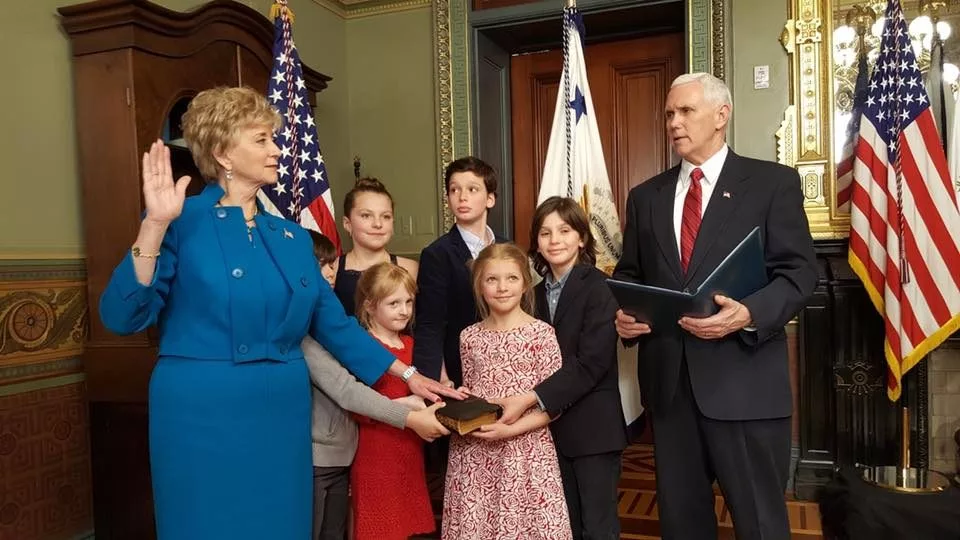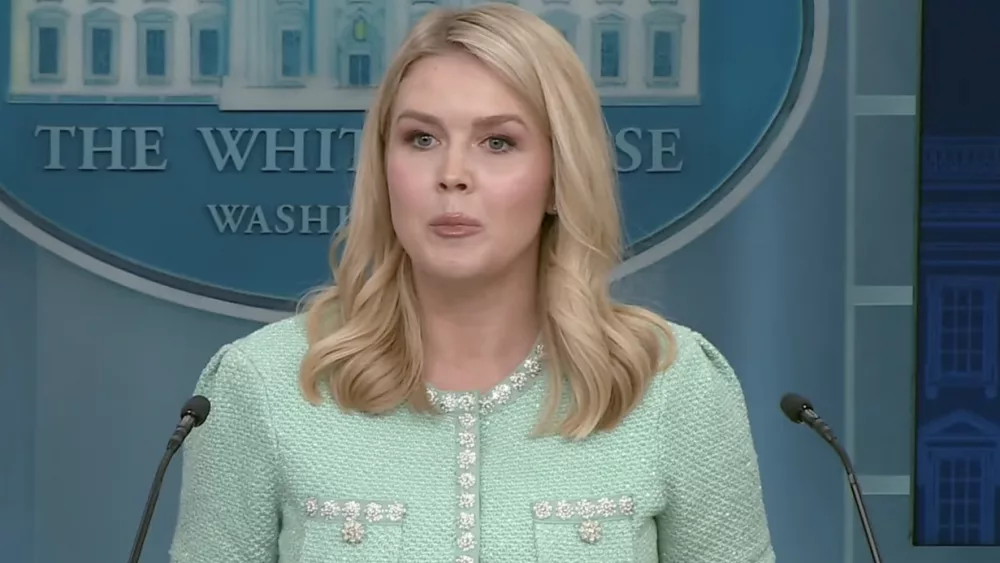(Washington, D.C.) The U.S. House failed to pass a Republican stopgap spending package Thursday, sharply increasing the odds a partial government shutdown will begin after the current funding bill expires Friday at midnight.
The 174-235 House vote came less than three hours after GOP leaders released a second stopgap spending bill this week. The first version, released just two days ago, was widely rejected by President-elect Donald Trump as well as his allies on and off Capitol Hill.
A total of 38 GOP lawmakers and 197 Democrats voted against passage. Only two Democrats voted in support of the measure. One Democrat voted “present.”
House Republicans tried to approve the new measure under a process called suspension of the rules, which required at least two-thirds of lawmakers to support the legislation for passage, including Democrats. Trump endorsed this new version, which included a two-year suspension of the debt limit.
GOP leaders could next try to put the failed bill up for a vote under a rule, which requires a simple majority vote to approve, but that path takes a few more steps and isn’t a guarantee this legislation could pass.
House Appropriations Chairman Tom Cole, R-Okla., said during floor debate the bill was necessary to avoid a shutdown and provide disaster aid to states throughout the country.
“We need to provide the necessary disaster recovery aid for states and communities as our fellow citizens rebuild and restore. The relief efforts are ongoing — it will be months, if not years, before life returns to normal,” Cole said.
No input from Democrats
Connecticut Rep. Rosa DeLauro, the top Democrat on the Appropriations Committee, rebuked GOP lawmakers for walking away from the deal both parties reached on the first stopgap package.
“There were things in it that Democrats liked and Republicans did not, and there were things in it that Republicans liked and Democrats would have preferred to leave out. But that is the nature of government funding bills,” DeLauro said. “They require compromise and the support of Democrats and Republicans.”
The legislation House lawmakers were about to vote on had no input from Democrats, she said.
While Republicans have a narrow majority in the House, Democrats control the Senate and the White House, making bipartisan agreement on legislation essential to it becoming law.
White House press secretary Karine Jean-Pierre wrote in a statement released Thursday just before the vote that the GOP was “doing the bidding of their billionaire benefactors at the expense of hardworking Americans.”
“Republicans are breaking their word to support a bipartisan agreement that would lower prescription drug costs and make it harder to offshore jobs to China — and instead putting forward a bill that paves the way for tax breaks for billionaires while cutting critical programs working families count on, from Social Security to Head Start,” she wrote. “President Biden supports the bipartisan agreement to keep the government open, help communities recovering from disasters, and lower costs — not this giveaway for billionaires that Republicans are proposing at the 11th hour.”
Trump calls new bill ‘a very good deal’
The stopgap spending package that failed Thursday night would have kept the government funded through mid-March while boosting disaster aid by about $100 billion.
The legislation would have suspended the nation’s debt limit for an additional two years through January 2027 and given Congress until September to finish the much overdue farm bill.
Trump cheered the new version of the stopgap spending bill before the vote after rejecting the first version released just two days ago.
“Speaker Mike Johnson and the House have come to a very good Deal for the American People,” Trump wrote on social media. “The newly agreed to American Relief Act of 2024 will keep the Government open, fund our Great Farmers and others, and provide relief for those severely impacted by the devastating hurricanes.”
“A VERY important piece, VITAL to the America First Agenda, was added as well – The date of the very unnecessary Debt Ceiling will be pushed out two years, to January 30, 2027,” Trump added. “Now we can Make America Great Again, very quickly, which is what the People gave us a mandate to accomplish.”
Two days of tension
The second stopgap bill came after a dramatic 48 hours that began with the Tuesday night release of a different stopgap spending package before Trump’s ally Elon Musk called on GOP lawmakers to reject the bill their leadership team on Capitol Hill had negotiated over weeks.
Trump then told Republicans to address the debt limit in the package or get rid of it entirely, throwing another complex issue into the mix at the last minute.
The core elements of the stopgap spending package House Republicans released Thursday afternoon were similar to the Tuesday night package, though it dropped dozens of measures, including a provision allowing the nationwide sale of 15% ethanol blended gasoline year round.
The new package, same as the old package, doesn’t include a long-standing provision that prevents members of Congress from receiving a cost of living adjustment. Unless that’s changed, lawmakers would receive a 3.8% raise next year increasing their annual salary from $174,000 to $180,600.
“It removed key provisions to limit the power of pharmaceutical companies, and abandons our bipartisan efforts to ensure American dollars and intellectual property are reinvested in American businesses and workers; instead of fueling the Chinese Communist Party’s technology and capabilities,” DeLauro said during debate.
The new 116-page stopgap spending bill was considerably shorter than the 1,547-page version released Tuesday.
Several new deadlines
The spending package would have given Congress until March 14 to complete work on the dozen annual government funding bills that were supposed to become law by the start of the new fiscal year on Oct. 1.
It would have given the House and Senate until Sept. 30, 2025, to reach agreement on the five-year farm bill, which lawmakers were supposed to negotiate a new version of more than a year ago.
The legislation would suspend the debt limit through Jan. 30, 2027.
The bill includes tens of billions in emergency spending to help communities throughout the country recover from various natural disasters, including wildfires, tornadoes and hurricanes.
A summary of the bill, released by House Democrats on Tuesday, showed the Federal Emergency Management Agency and Department of Agriculture would receive the bulk of the natural disaster recovery funding. House Republicans didn’t appear to have altered any of the original funding levels for disaster aid in the updated Thursday version.
The USDA would get $33.5 billion in funding, with $21 billion of that designated for disaster assistance and another $10 billion for economic assistance to farmers and producers.
Other agriculture assistance funding would go toward the Agriculture Research Service, Emergency Watershed Protection Program, Emergency Forest Restoration Program and Rural Development Disaster Assistance Fund, among several others.
The Department of Homeland Security would receive $30.8 billion in funding, with $29 billion for the Federal Emergency Management Agency’s disaster relief fund.
An additional $1.5 billion would go to the Hermit’s Peak and Calf Canyon Fire fund “to continue efforts to support families who suffered damages due to the April 2022 wildfire,” according to the summary.
The wildfire was the largest in New Mexico’s history and caused about $5.14 billion in damages, according to a report released this week.
The Department of Housing and Urban Development’s Community Development Block Grant program for disaster recovery would receive $12 billion in additional funding.
Another $8 billion would go to the Transportation Department to “reimburse states and territories for damage from natural disasters to roads and bridges in the National Highway System, including 100 percent of costs associated with rebuilding the Francis Scott Key Bridge in Baltimore,” according to Democrats’ summary.
The Forest Service would get $6.4 billion for ongoing recovery efforts from natural disasters that took place in 2022, 2023 and this year. The National Park Service would receive $2.3 billion as part of the Department of the Interior’s $3 billion total.
The Defense Department would get $3.4 billion to repair damages related to natural disasters. The Army Corps of Engineers would receive $1.5 billion for repairs and to increase resiliency.
The Small Business Administration would receive $2.25 billion for disaster loans.
Filibuster threat
Shortly before House GOP leaders announced their second stopgap package, North Carolina Sen. Thom Tillis and South Carolina Sen. Lindsey Graham committed to holding a talking filibuster to delay passage of any stopgap funding measures if that bill doesn’t include substantial disaster aid.
The two, along with North Carolina Sen. Ted Budd, all of whom are Republicans, held a press conference Thursday afternoon to urge GOP leaders in the House to keep the roughly $100 billion in emergency disaster aid in any short-term spending package.
They also rejected calls from some members of their own party to find ways to pay for the new emergency spending, saying that’s not how disaster aid packages have traditionally been handled.
“When you’re in the middle of a crisis, I don’t think anybody’s going to want to hear somebody come to the floor and talk about the fiscal responsibility of giving these people a home again, or giving them an opportunity to open up a business again and employ people,” Tillis said. “So, no I don’t think $10 billion or $20 billion, and ‘I promise we’ll do something more in March’ is an acceptable solution. We know what the need is today. It was negotiated in a package and it needs to be in a package to get my support to get out of here.”
Graham sought to explain the realities of divided government and pointed out that even when Republicans control the House and Senate next year, they’ll still need Democratic support on spending bills.
“We need 60 votes to get it done in the Senate,” Graham said, referring to the chamber’s legislative filibuster, which requires at least 60 lawmakers vote to advance bills toward final passage.
“Mike Johnson is going to have to pick up a handful, at least, of Democrats, because there’s some Republicans who will never vote for anything,” Graham added.
Tillis was unable to answer a question about whether a partial government shutdown beginning Saturday at 12:01 a.m. would affect the federal government’s ongoing natural disaster response in his home state.
The Federal Emergency Management Agency, Department of Agriculture, Department of Transportation and numerous federal departments would be required to follow their shutdown guidance if Congress doesn’t fund the government on time.
Those departments and agencies divide up their staffs into excepted employees, whose jobs address the protection of life or property, and non-excepted employees, who don’t.
Neither category of federal employee gets paid until after the shutdown ends.
American Federation of Government Employees National President Everett Kelley released a written statement Thursday that a shutdown would harm federal workers who “inspect our food, protect our borders, ensure safe travel during the holidays, and provide relief to disaster victims.”
“Over 642,000 of them are veterans of our armed services,” Kelley wrote. “Allowing them to go without a paycheck over the holidays is unacceptable.”
This story first appeared on Idaho Capital Sun.




